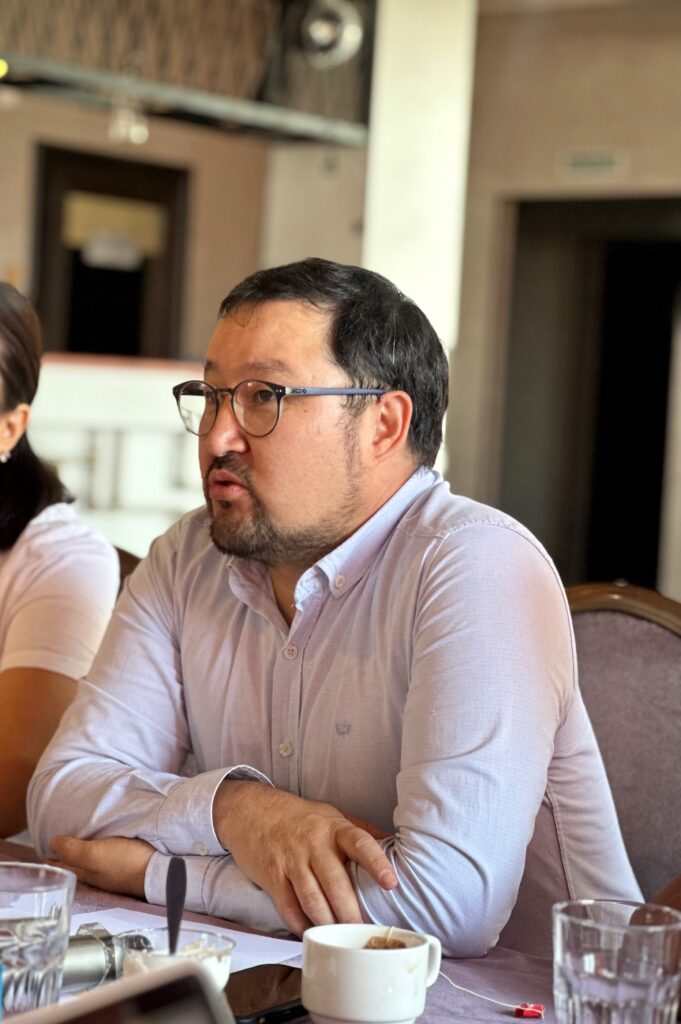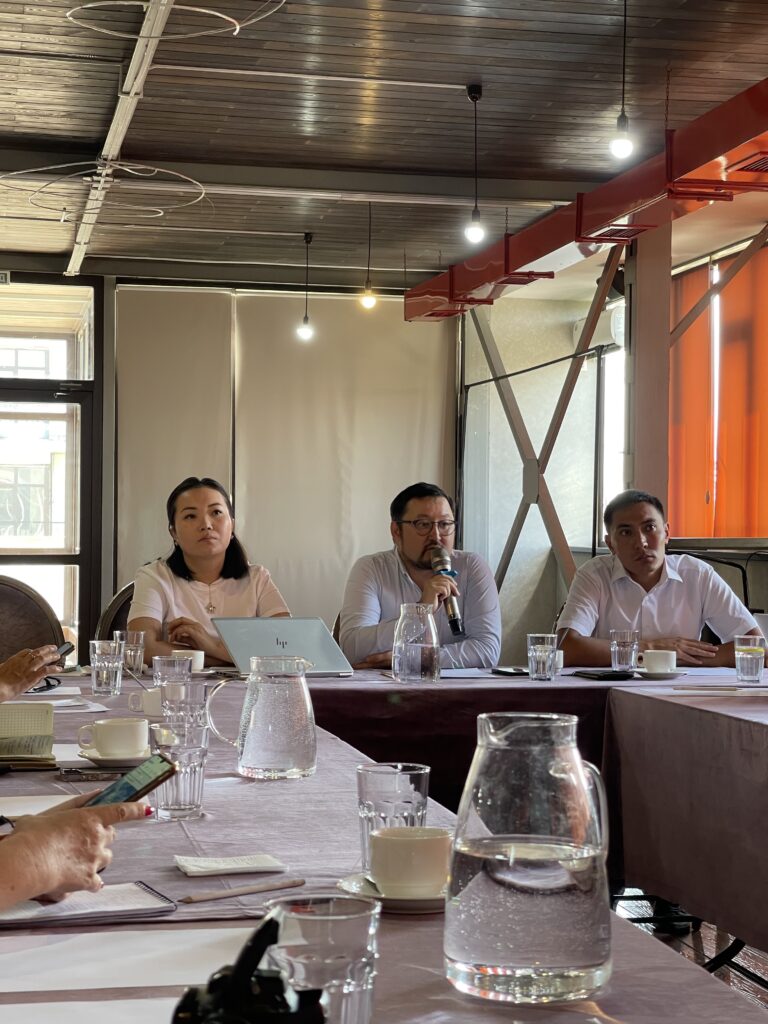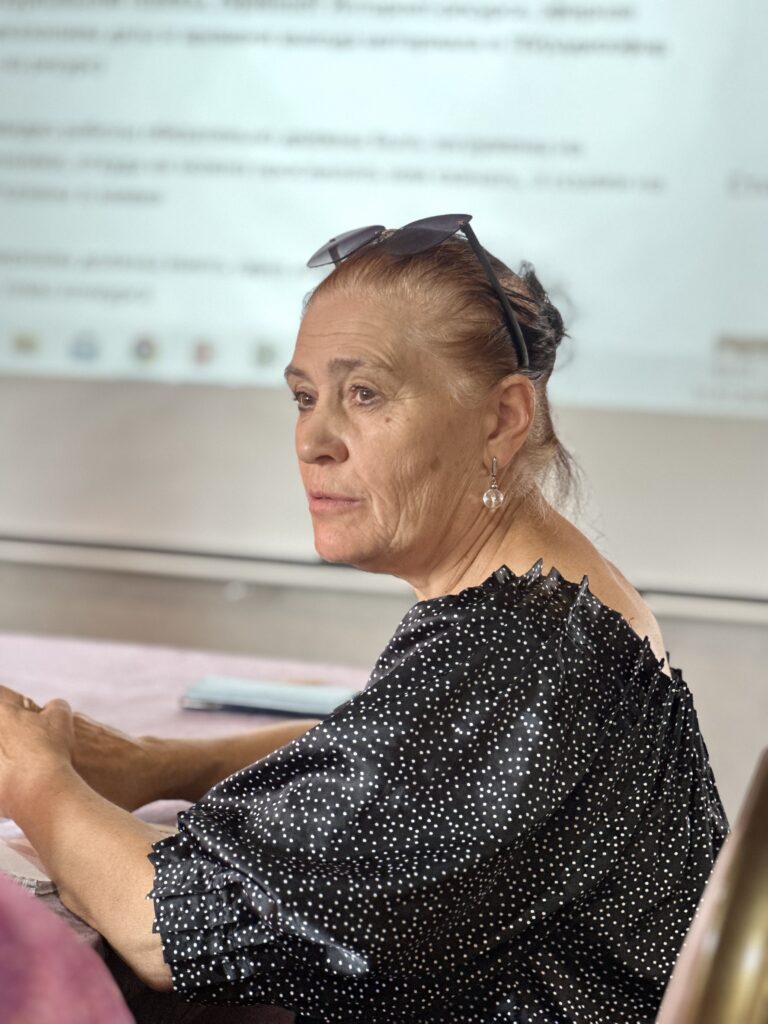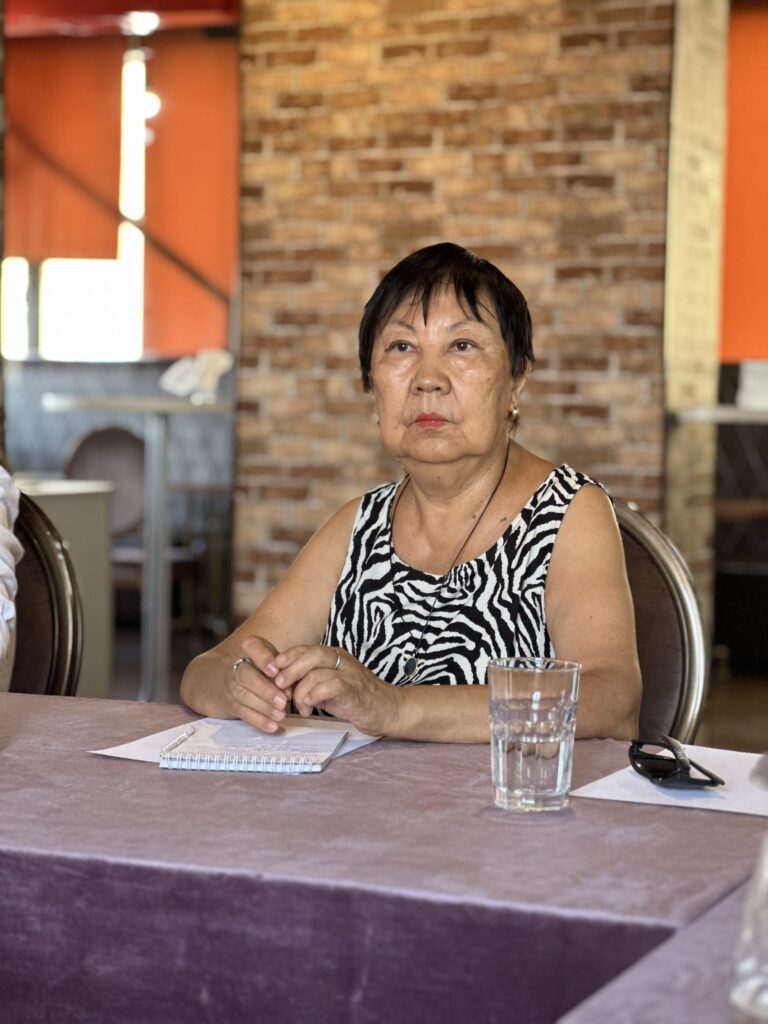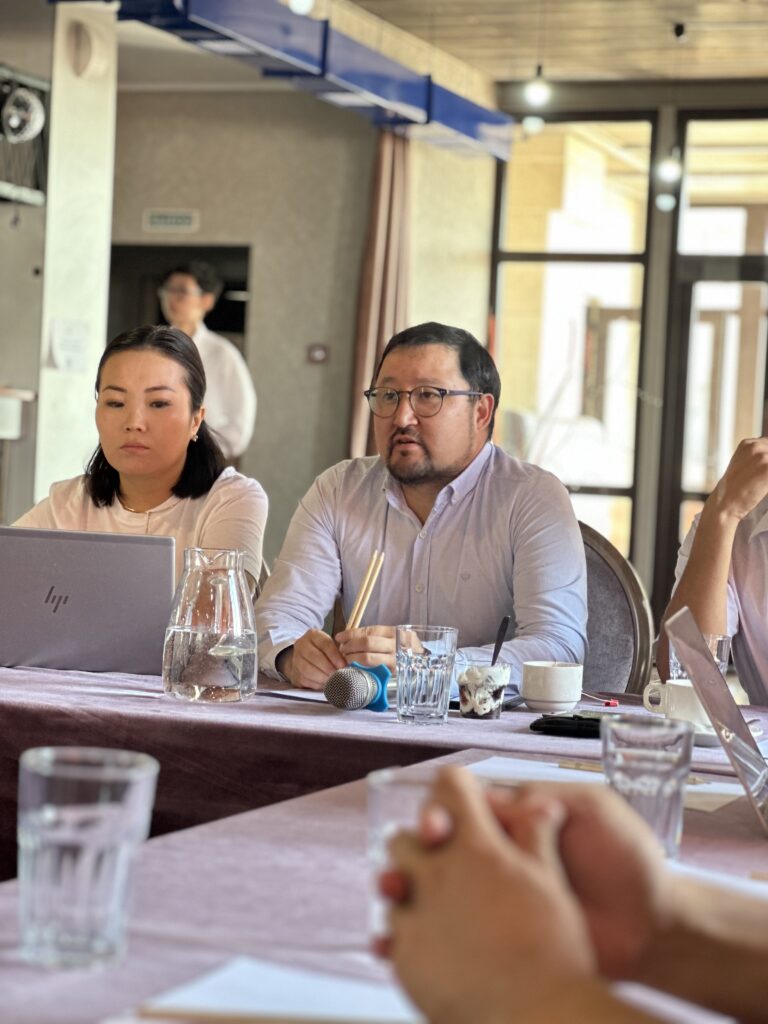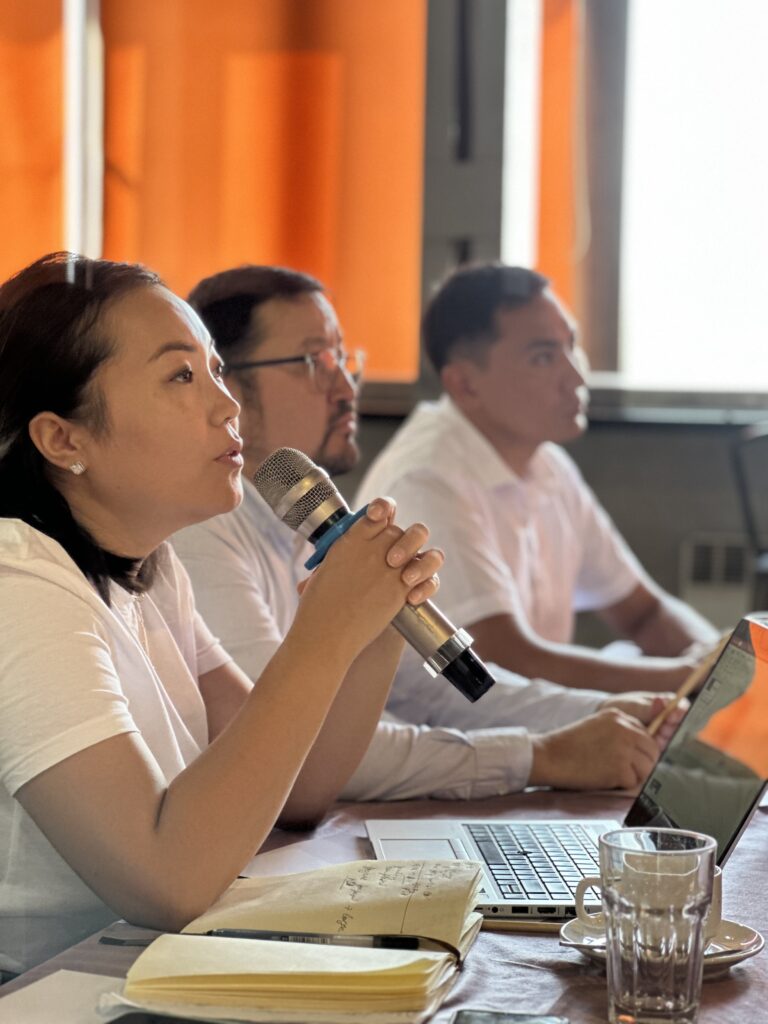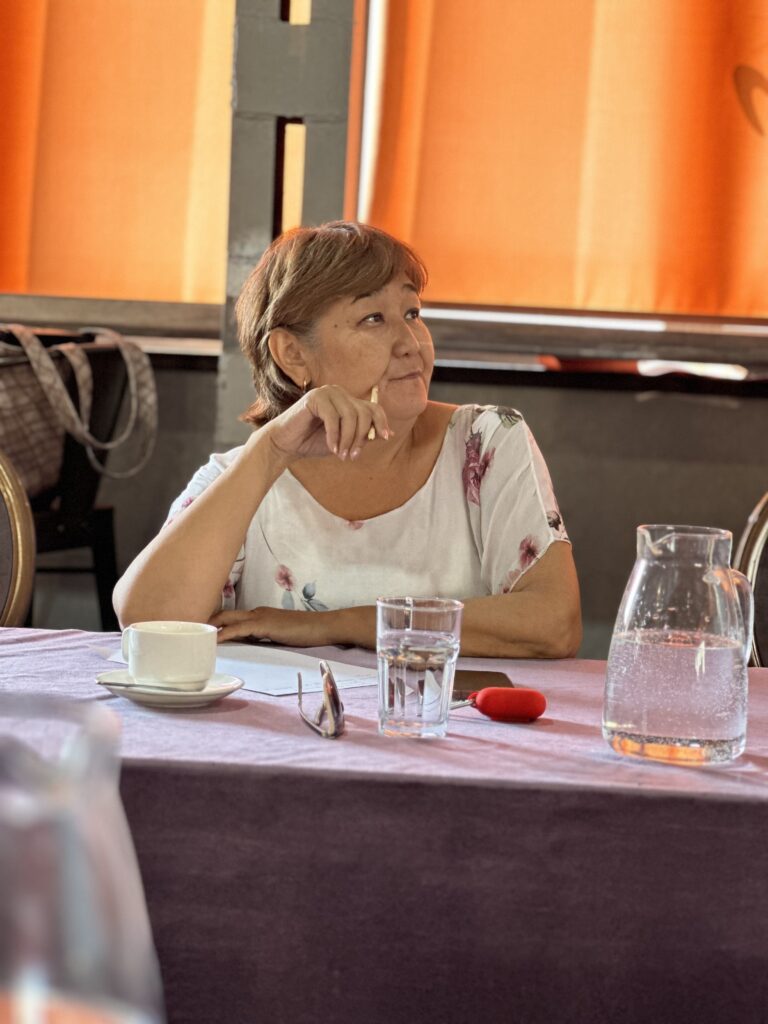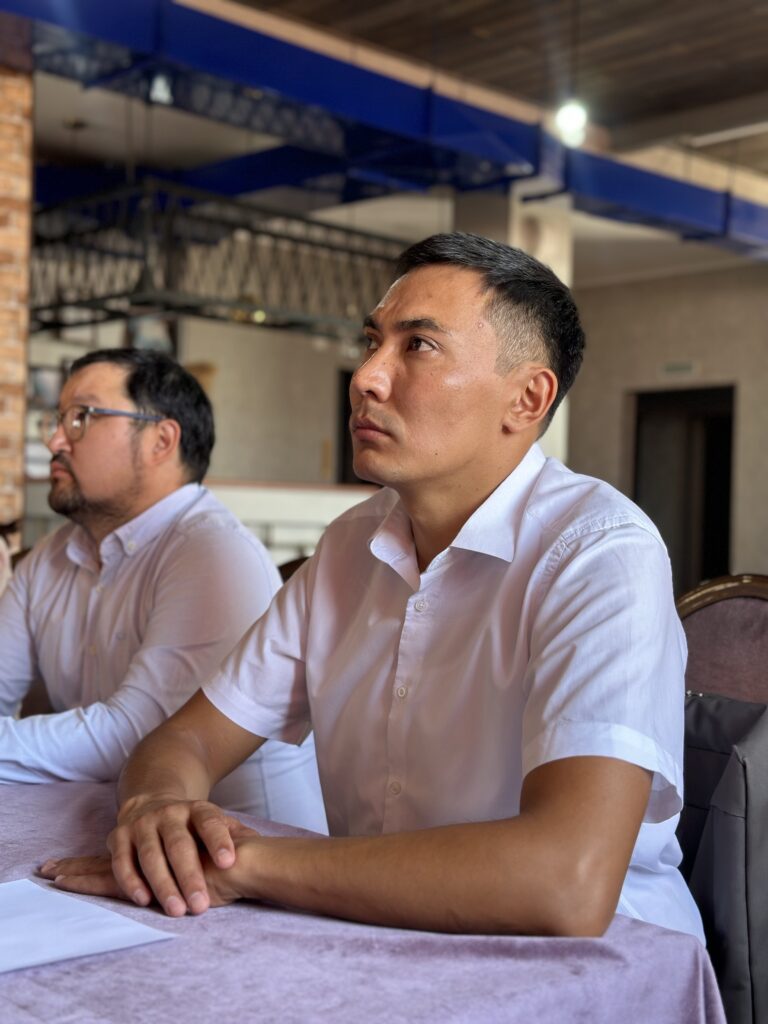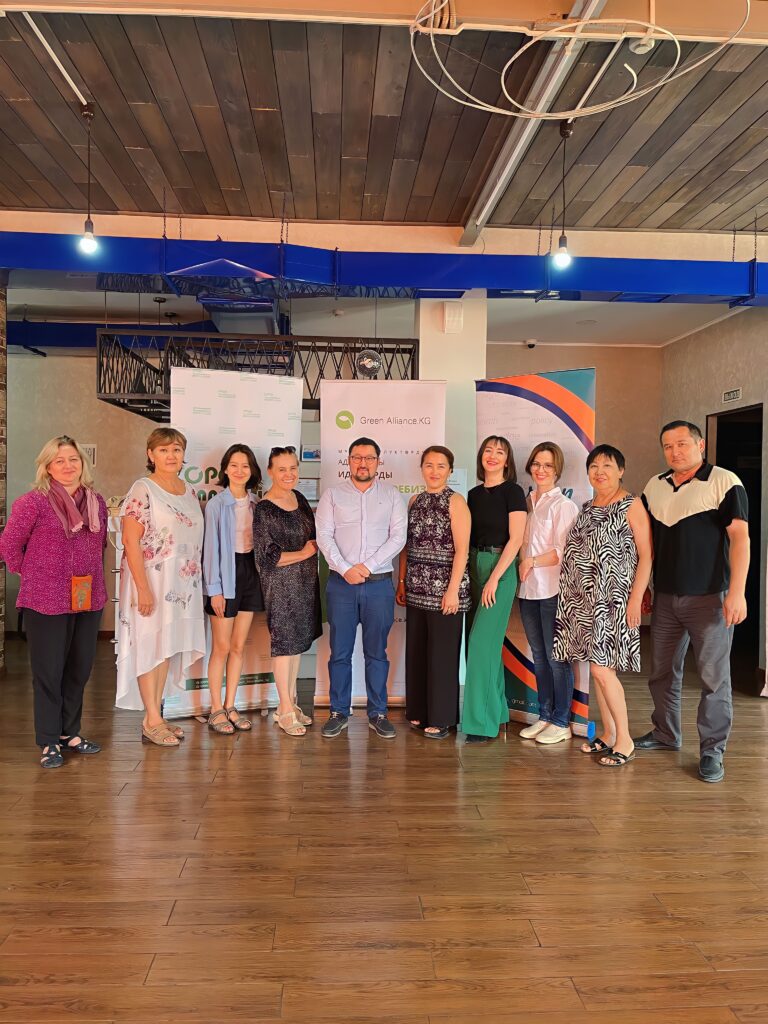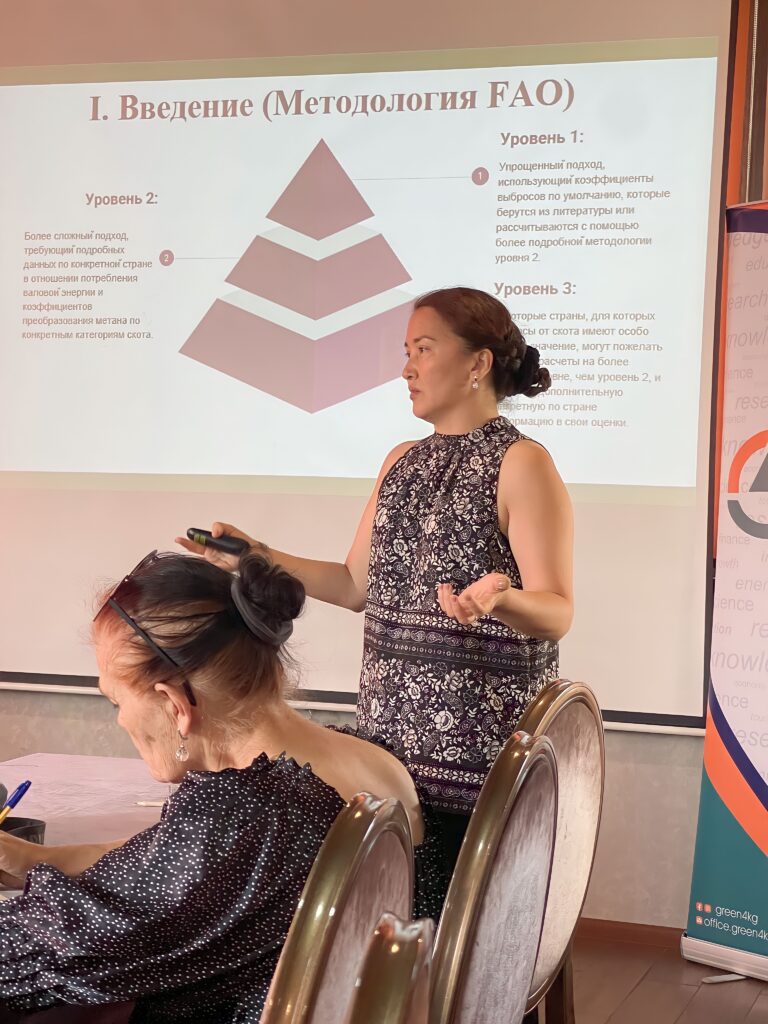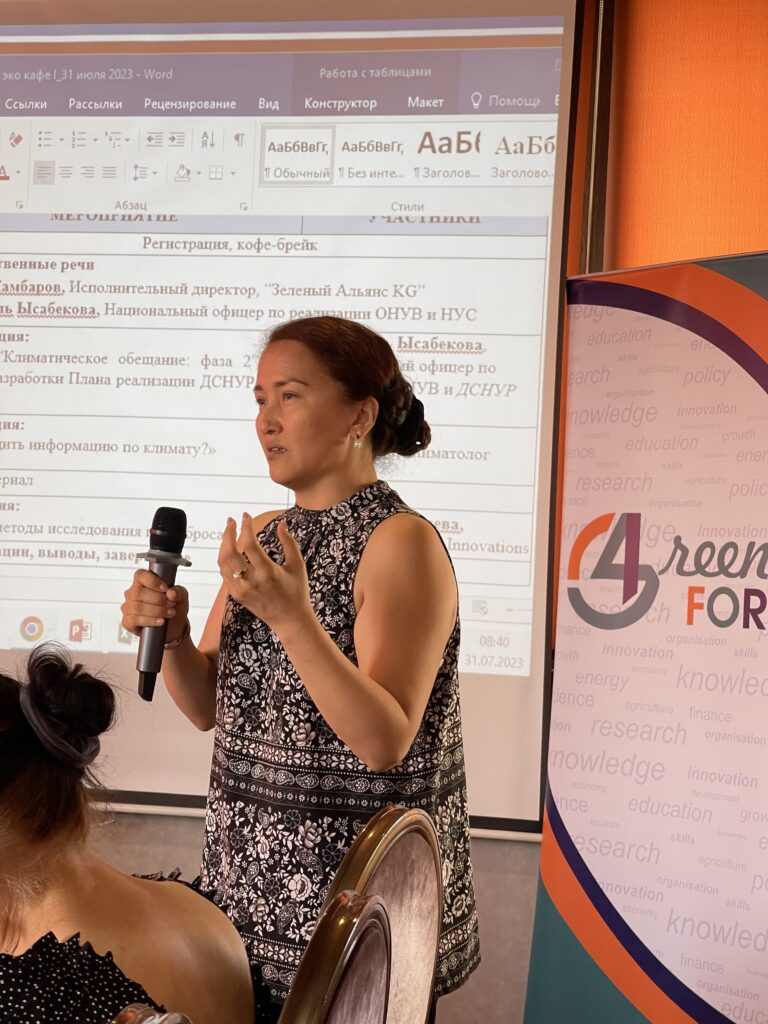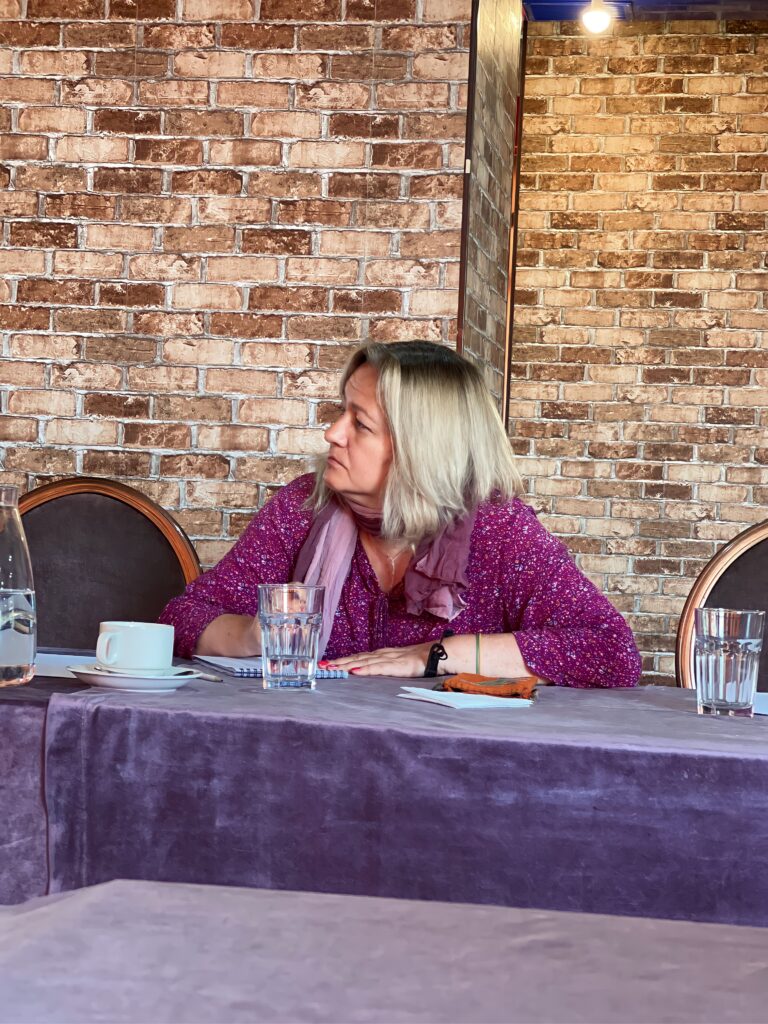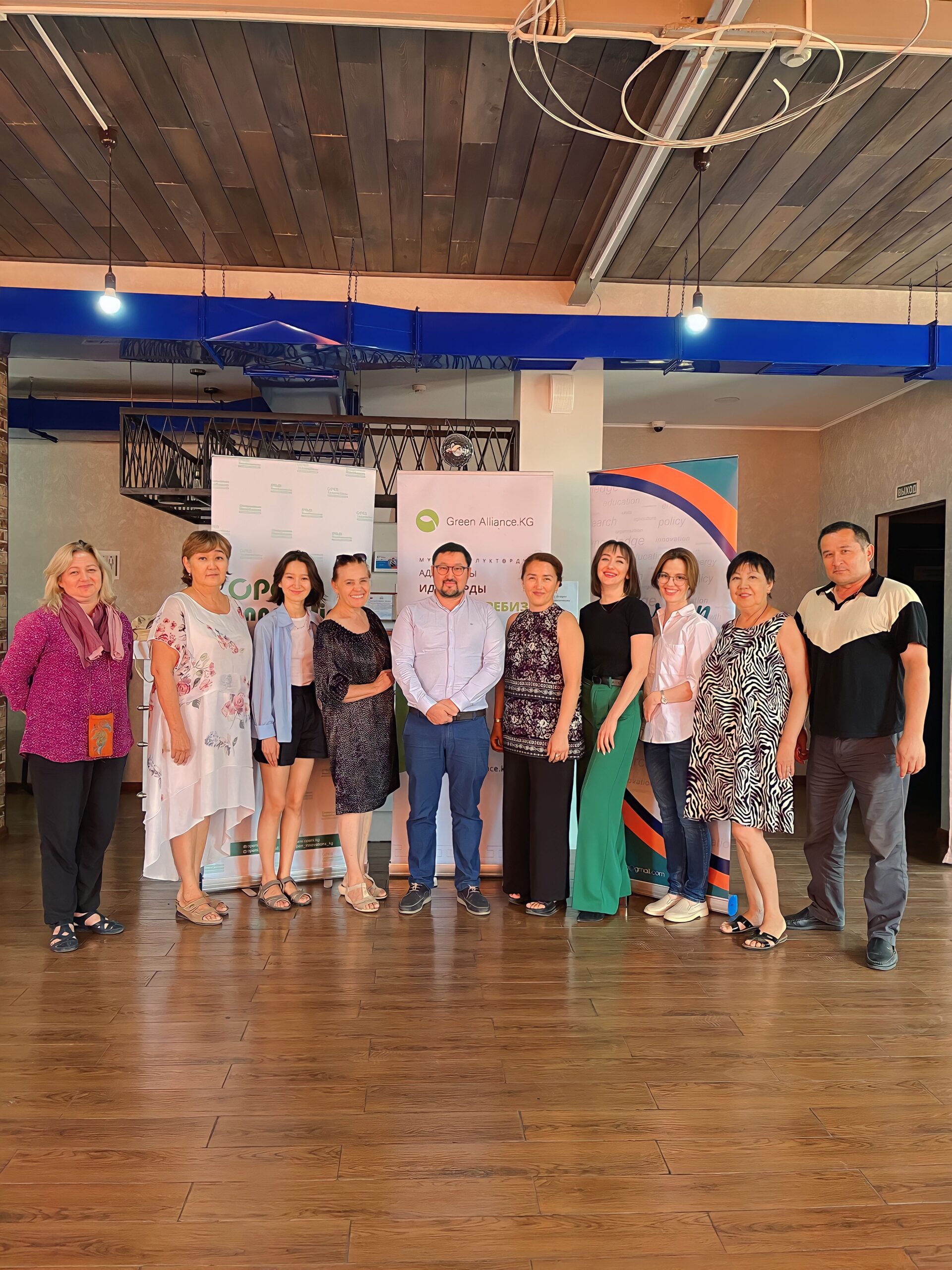
July 31, within the framework of the UNDP project “Providing advisory support in the development of the Expanded NDC Implementation Plan and the Long-term Low-Carbon Development Strategy until 2050.” specialists and environmental journalists discussed implementation plans “How can Kyrgyzstan achieve carbon neutrality by 2050?”
Environmental issues should take one of the leading positions in the information agenda of the socio-political media. The priority task of environmental journalism is to promote practical improvement of the state of the environment. For effective planning of regional development, it is necessary to collect and analyze primary data aggregated at the district level, to determine critical and optimal values of indicators for territories with their own climatic and other characteristics.
That is why the role of environmental journalism is increasing, which can convey to the average person information about the state of the environment in the region where he lives, in his country and about global problems in general. Proper coverage of these issues in the media will lead to increased awareness and will encourage each individual to act for the benefit of their environment, and therefore for the benefit of the entire planet.
 Ysabekova Baktygul, UNDP Coordinator for the implementation of the NDC, in her presentation on the project “Climate Promise: Phase 2” and the process of developing the Implementation Plan for the NDC until 2050,” familiarized the round table participants with current data and emphasized the importance of a long-term low-carbon development strategy for the country . She added that to ensure transparency and inclusiveness in the NDC update process, Broad Participation in the NDC process was ensured. To achieve the Paris Agreement, countries develop NDCs, which are voluntary commitments by countries. At the same time, the development of NDCs is aimed at solving the following tasks: Assess the country’s contribution to achieving the goals of the Paris Agreement; Demonstrate the commitment of the parties and specify the integration of climate issues into socio-economic development plans; Involve all government and non-government stakeholders in the fight against climate change; “Strengthen the climate change policy management process at the national, regional and local levels of the country. Kyrgyzstan presented its Proposed NDC in September 2015 and an Updated NDC in 2021. The next deadline for review and submission of NDC 2 is 2025-26.” – she concluded.
Ysabekova Baktygul, UNDP Coordinator for the implementation of the NDC, in her presentation on the project “Climate Promise: Phase 2” and the process of developing the Implementation Plan for the NDC until 2050,” familiarized the round table participants with current data and emphasized the importance of a long-term low-carbon development strategy for the country . She added that to ensure transparency and inclusiveness in the NDC update process, Broad Participation in the NDC process was ensured. To achieve the Paris Agreement, countries develop NDCs, which are voluntary commitments by countries. At the same time, the development of NDCs is aimed at solving the following tasks: Assess the country’s contribution to achieving the goals of the Paris Agreement; Demonstrate the commitment of the parties and specify the integration of climate issues into socio-economic development plans; Involve all government and non-government stakeholders in the fight against climate change; “Strengthen the climate change policy management process at the national, regional and local levels of the country. Kyrgyzstan presented its Proposed NDC in September 2015 and an Updated NDC in 2021. The next deadline for review and submission of NDC 2 is 2025-26.” – she concluded.

Kretova Zoya, climatologist, as part of her speech on the topic “How to find information on climate?” indicated Sources of information, such as: International, regional and National. In addition, she showed an example of analyzing the rate of increase in air temperature in Asia.
“NGMS data are always more reliable, especially if they have been checked for quality and completeness, and corrections have been made to the data for homogeneity, corrections to the sediment series for wetting, etc.,” recalled Zoya Kretova.
School of Data journalist Anastasia Valeeva shared her video about how data journalism can be used to present information more clearly and intelligibly.
 Sagynalieva Maral, Open Invitation Researcher, Policy Expert shared a presentation on calculating CO2 emissions in livestock farming using the FAO methodology. In particular, she touched upon tasks aimed at producing hydroponic feed and feed using the traditional method. “The most common method of improving livestock in rural areas is cross breeding, that is, crossing outbred low-productive females (cows, heifers, sows, etc.) with producers of improved breeds. Cross breeding makes it possible to quickly replace outbred cattle with breeding, highly productive cattle. to properly organize breeding work on a farm, you need to know the productivity of each animal, its origin, etc. This is achieved through primary zootechnical accounting,” she noted.
Sagynalieva Maral, Open Invitation Researcher, Policy Expert shared a presentation on calculating CO2 emissions in livestock farming using the FAO methodology. In particular, she touched upon tasks aimed at producing hydroponic feed and feed using the traditional method. “The most common method of improving livestock in rural areas is cross breeding, that is, crossing outbred low-productive females (cows, heifers, sows, etc.) with producers of improved breeds. Cross breeding makes it possible to quickly replace outbred cattle with breeding, highly productive cattle. to properly organize breeding work on a farm, you need to know the productivity of each animal, its origin, etc. This is achieved through primary zootechnical accounting,” she noted.
 “In light of the ongoing climate crisis and the rise in climate strikes around the world, the contribution of journalists to informing public discourse cannot be overlooked. Climate journalism plays a unique role in covering one of the most pressing, if not the most pressing, issues of our time. It includes coverage of the latest environmental forecasts and scientific data, as well as reporting from climate summits and congresses, thereby contributing to the public debate on the climate crisis. In this way, climate journalists, as public watchdogs, join forces with environmental scientists and activists to raise awareness, advocate for solutions, and find solutions to the climate crisis. I urge you to actively highlight the problems of climate change in the country and in the region, as it is important to convey to every citizen of Kyrgyzstan the message about the importance of environmental protection,” concluded the Executive Director of the Green Alliance, Ilgiz Kambarov.
“In light of the ongoing climate crisis and the rise in climate strikes around the world, the contribution of journalists to informing public discourse cannot be overlooked. Climate journalism plays a unique role in covering one of the most pressing, if not the most pressing, issues of our time. It includes coverage of the latest environmental forecasts and scientific data, as well as reporting from climate summits and congresses, thereby contributing to the public debate on the climate crisis. In this way, climate journalists, as public watchdogs, join forces with environmental scientists and activists to raise awareness, advocate for solutions, and find solutions to the climate crisis. I urge you to actively highlight the problems of climate change in the country and in the region, as it is important to convey to every citizen of Kyrgyzstan the message about the importance of environmental protection,” concluded the Executive Director of the Green Alliance, Ilgiz Kambarov.
This event is conducted with the support of the UNDP project “Providing advisory support in the development of the Expanded NDC Implementation Plan and the Long-Term Low-Carbon Development Strategy until 2050.”
